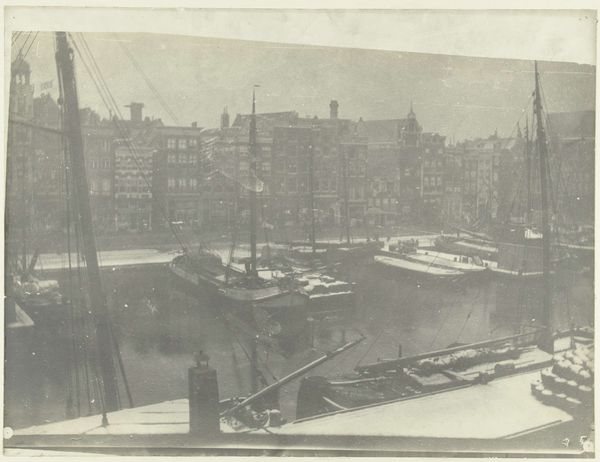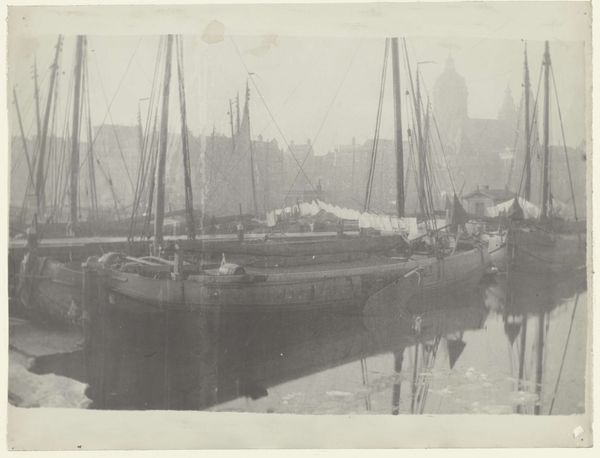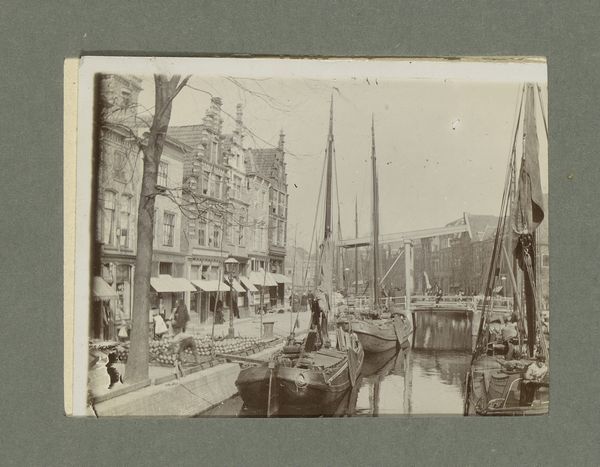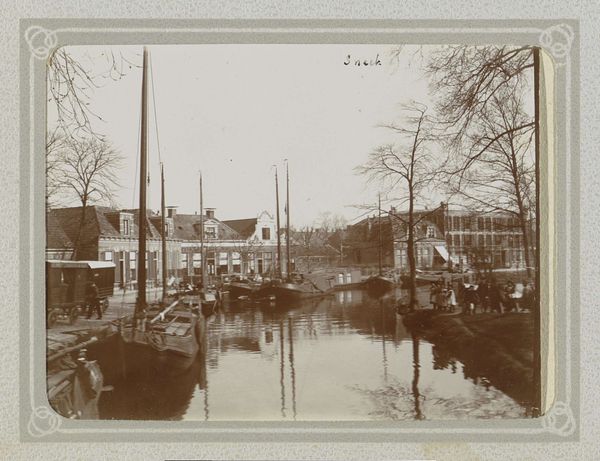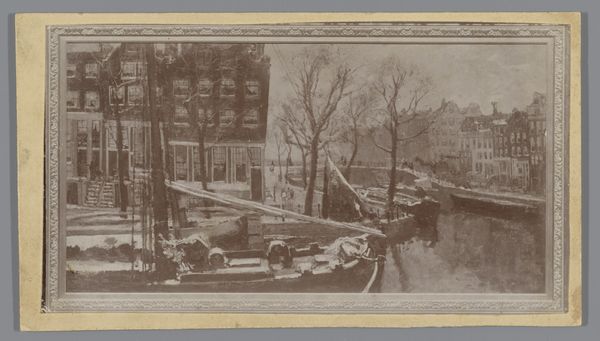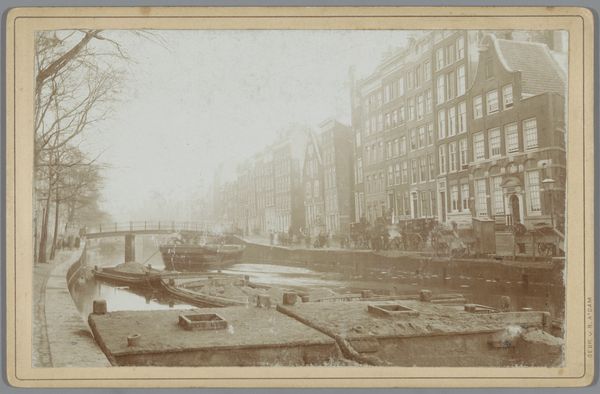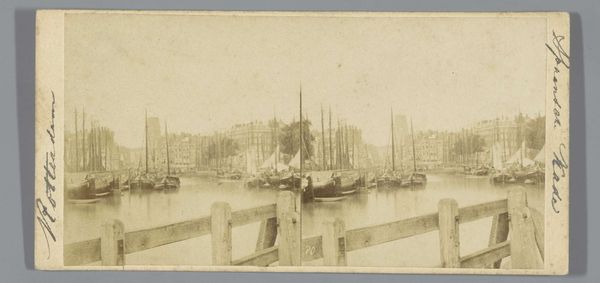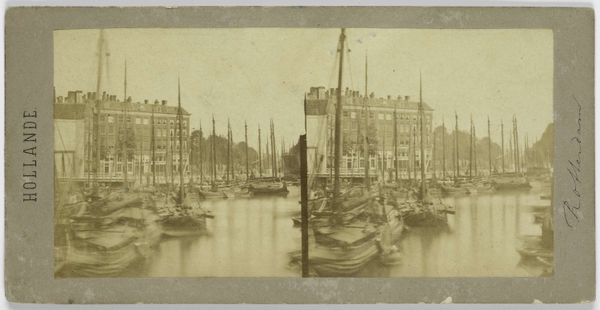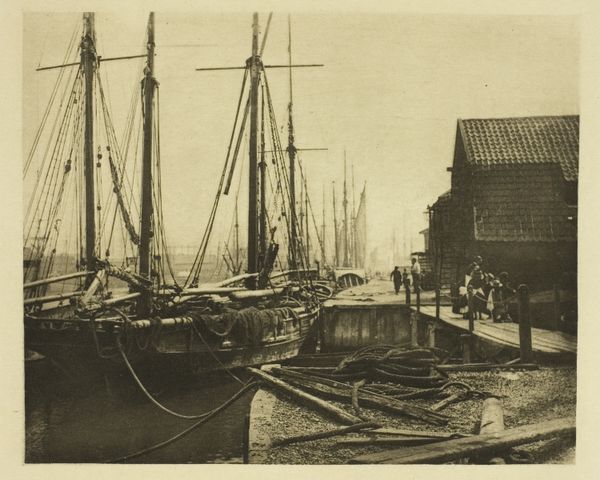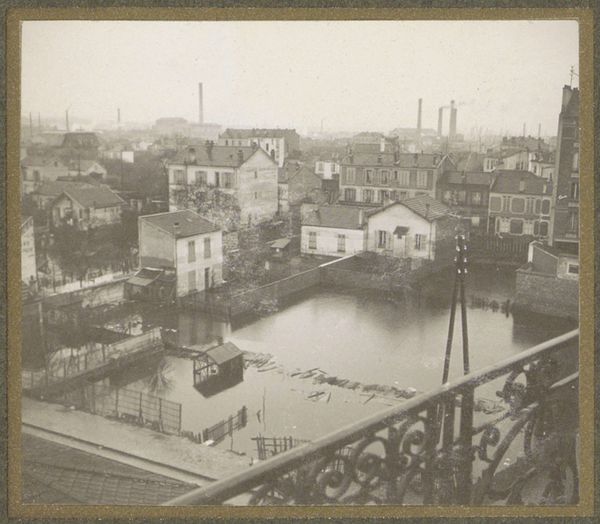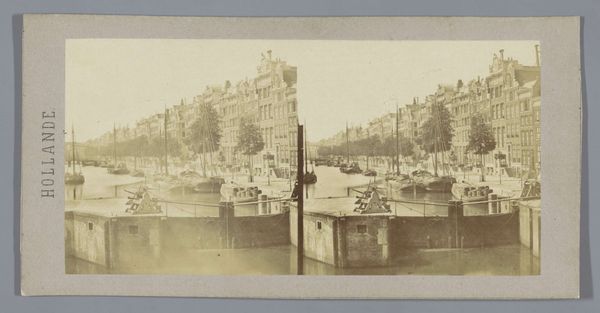
Dimensions: height 378 mm, width 499 mm, height 450 mm, width 570 mm
Copyright: Rijks Museum: Open Domain
Curator: George Hendrik Breitner's "Ships on Damrak in Amsterdam," dating from 1902-1903, presents a fascinating glimpse into the early 20th-century city. Held in the collection of the Rijksmuseum, this work offers a textured vision of urban life through photography. Editor: The subdued tones and composition give me an immediate sense of a city pausing, a quiet harbor moment amid bustling Amsterdam. Curator: Breitner was particularly interested in documenting everyday life. He utilized photography extensively to capture street scenes. These studies were often used as references for his paintings, showcasing his dedication to realism and documenting the city as he experienced it. His use of photography challenged its perceived limitations. Editor: It makes you consider whose reality is captured, too. Does Breitner's focus shift our gaze, privileging certain narratives about Amsterdam, overlooking other experiences or groups, say the working classes who kept the harbor running? Curator: It’s vital to consider Breitner’s social context. The late 19th and early 20th centuries in Europe were a period of massive social upheaval and industrial expansion. Artists, like Breitner, grappled with depicting these changes. Editor: Exactly. And this particular scene—ships lining a central canal—hints at the economic arteries of Amsterdam. Trade, labor, and the legacy of Dutch colonialism are all present, even in this relatively calm image. I wonder about the human cost often obscured by such picturesque scenes? Curator: Photography offered him, and us, the immediacy of lived experiences. Breitner wanted to give viewers an authentic portrayal of modern city life. While considering his social context, it's fair to say his artistic process gave us unique views of Amsterdam that are now, essentially, time capsules. Editor: Perhaps the real value here lies in that intersection: to use historical work not only as a snapshot of a specific time, but as a reflective surface to contemplate present-day societal structures, asking who still thrives from such trade today. Curator: Absolutely. "Ships on Damrak" reminds us of photography's power to record history but, more importantly, the necessity for critical analysis. Editor: It encourages a dialogue about art's function and accountability—both then and now.
Comments
No comments
Be the first to comment and join the conversation on the ultimate creative platform.
